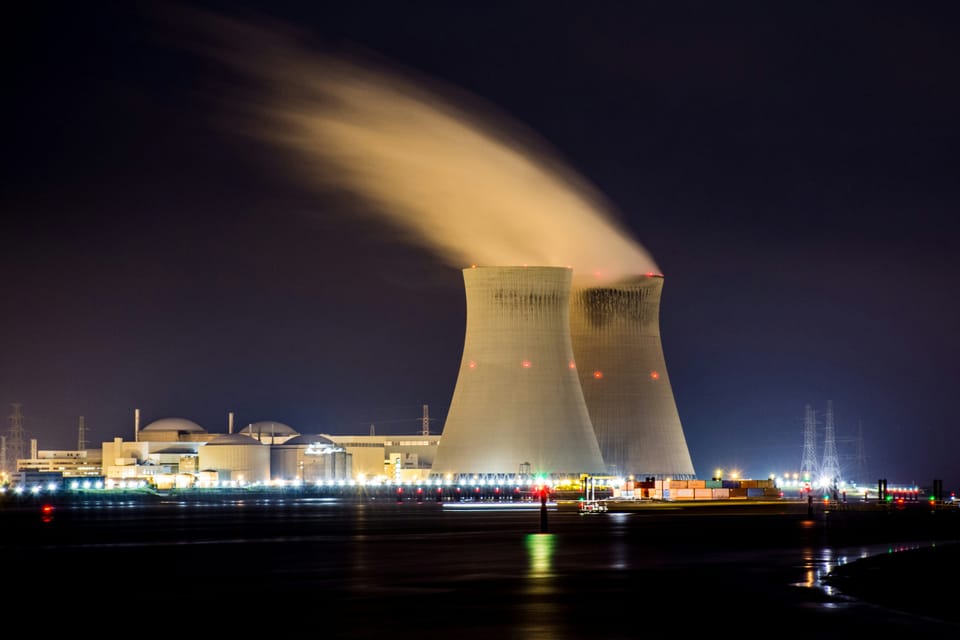Energy transition: Is nuclear power sustainable?

The pressure to decarbonise the world’s energy supply is prompting a revival for nuclear power. But how sustainable is nuclear energy?
A few years ago in the aftermath of the Fukushima nuclear disaster, it seemed like the world was on a path to phasing out nuclear energy as Germany, Spain and several other countries across the globe announced plans to shut down nuclear power plants.
In 2020, nuclear energy generation experienced its largest decline since the 2011 Fukushima disaster – but since then, the memory of the disaster has faded, and with growing pressure to accelerate the energy transition and deliver their net zero targets, many countries have had a change of heart.
Tripling nuclear energy capacity by 2050
At COP28 in 2023, 25 countries (including Japan) committed to tripling global nuclear capacity by 2050. Six more countries joined them at COP29, including some that had previously vowed to move away from this power source.
Government pledges to increase nuclear energy capacity have emboldened companies (particularly in tech, where the explosion of AI is making data centre energy consumption skyrocket) to invest in it.
Google, for example, has been investigating the role of nuclear energy to power data centres for years, and recently signed the world’s first corporate agreement to purchase nuclear power from multiple small modular reactors to be developed by Kairos Power.
In a January 2025 paper, the International Energy Agency (IEA) predicts that nuclear power generation will reach record highs this year. “It’s clear today that the strong comeback for nuclear energy that the IEA predicted several years ago is well underway,” said IEA Executive Director Fatih Birol. “In addition to this, more than 70 gigawatts of new nuclear capacity is under construction globally, one of the highest levels in the last 30 years, and more than 40 countries around the world have plans to expand nuclear’s role in their energy systems.”
What are small modular reactors (SMRs)
One of the technological developments enabling this revival of nuclear energy is small modular reactors or SMRs. Whereas nuclear plants are traditionally very large and produce over 1,000 MW of electricity per day, SMRs are a smaller and cheaper option, producing a maximum of 300 MW.
Because of their size, SMRs can also be assembled quickly in places where it is not possible to build a large nuclear plant, and their modularity means users can add electricity generation capacity as needed.
“With the right support, SMR installations could reach 80 GW by 2040, accounting for 10% of overall nuclear capacity globally,” write the IEA.
But while this technology was first invented in the 1950s, only two small modular reactors are currently in operation – in Russia and China. Dozens of others are in development across the US, Canada and Europe, but they face a number of hurdles, from permitting to capital costs (which ranged from US$8,765 to US$14,400 per kilowatt in the US in 2024) and supply chain bottlenecks.
Google’s deal with Kairos Power, for example, is based on the planned construction of several SMRs across the US, the first of which is only set to become operational in 2030. In other words, nuclear investments are not quick wins.
Environmental and social impacts of nuclear power
But environmental organisations like Greenpeace warn that nuclear power is not a “magic bullet solution” for energy decarbonisation: on top of their vulnerability to attacks and natural disasters, with explosions causing life-threatening consequences on humans and natural ecosystems, nuclear power plants create waste materials that remain toxic for hundreds or thousands of years.
The nuclear fission reaction that creates energy also requires significant amounts of water as a cooling agent – a resource made more and more scarce by climate change.
Some NGOs also argue that nuclear energy is not entirely zero emissions: while the production of electricity itself is carbon-free, the mining, milling and enriching of uranium, which is necessary for nuclear power generation, is very energy-intensive.
Trying to determine the embedded greenhouse gas emissions of nuclear energy is difficult, as scientific studies to date have come up with a wide range of results, but some place them at more than 100 g/kWh. In comparison, offshore wind power has an estimated 18 to 31.4 g of embedded GHG emissions per kWh.
Nuclear vs renewable energy
While true environmentalists argue that the abundance of sun and wind resources should be enough to meet the world’s power demands in a net zero world, renewable energy is intermittent and variable – and as such, not currently suitable for all applications.
Progress around energy storage could soon allow us to use sun and wind power even when these resources are not available, but batteries come with their own environmental and social footprint, as evidenced by issues in critical mineral supply chains.
Meanwhile, nuclear energy is a proven technology able to deliver consistent and reliable electricity, but comes with safety and environmental risks. The reality is that both technologies are likely to play a part in the energy transition, and with data centres projected to consume an ever greater share of global electricity generation in the coming years, investment in nuclear power isn’t going anywhere.







Member discussion